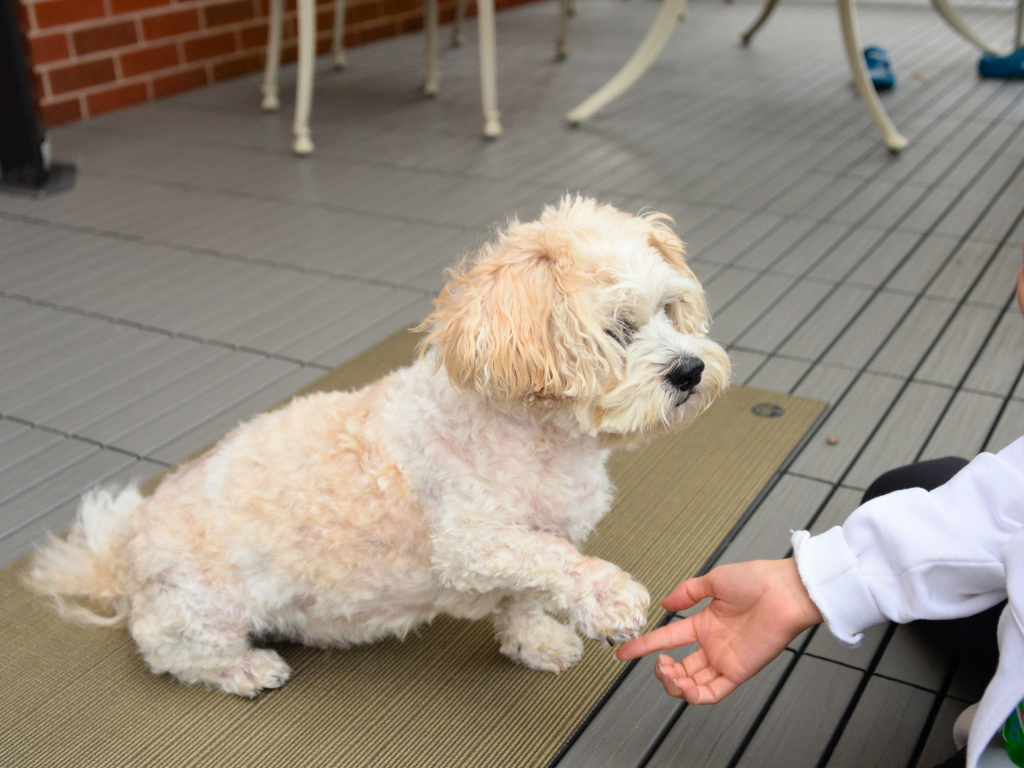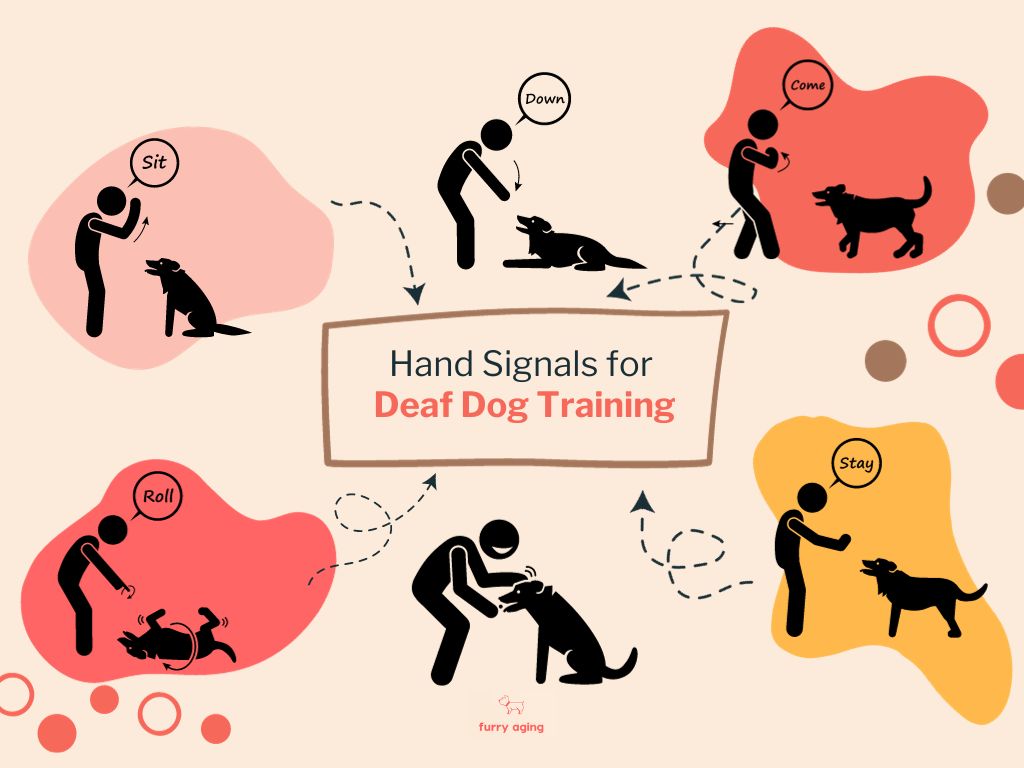
As a pet owner of a deaf dog, you may face several challenges. Deaf dogs are more susceptible to undetected dangers, such as motor vehicles. They are easily startled and have a higher likelihood of biting reflexively.
However, older dogs who have lost their hearing seem to adapt well and their quality of life is not significantly impacted.
In this article, we provide practical insights for pet owners who are living with a deaf dog, whether it is a puppy or a senior dog. We discuss effective communication and training methods that can help you overcome frustrations and build a strong bond with your furry friend.
Deafness in Dogs: Genetics and Aging
Congenital Deafness
Did you know that Dalmatians have the highest percentage of deafness among dog breeds, averaging 12%?
Dogs can be born deaf in both ears, known as bilateral deafness, or in one ear, known as unilateral deafness. This condition is caused by a faulty gene, which is usually linked to pigmentation patterns. Dogs with more white in their hair coat are more likely to be deaf.
Two pigmentation genes, the merle gene, and the piebald gene, are specifically associated with deafness in dogs. The merle gene is commonly seen in breeds like Collies, Shetland Sheepdogs, Dappled Dachshunds, Harlequin Great Danes, American Foxhounds, and Old English Sheepdogs. The piebald gene is common in breeds such as Bull Terriers, Samoyeds, Greyhounds, Great Pyrenees, Beagles, Bulldogs, and Dalmatians.
Deafness in Senior Dogs
As dogs age, they can develop hearing problems, often caused by chronic ear infections. This can lead to partial or complete deafness due to damage to the nerves.
Other factors that can cause deafness in dogs include tumors, polyps, head trauma, and exposure to drugs and chemicals that destroy the cochlear hair cells.
It’s important to talk to your veterinarian about the potential dangers of ototoxic drugs such as aminoglycoside antibiotics, including gentamicin, kanamycin, neomycin, tobramycin, and others.
Basic Principles of Deaf Dog Training
Focus on you
When training a deaf dog, there are some basic principles to follow. Firstly, it’s crucial that your furry friend focuses on you at all times, as they need to see your hand signal commands. To encourage this, reward your dog whenever they voluntarily look at you. Additionally, you can teach them a specific signal that means “watch me” – such as a gentle touch or a flashlight – and associate it with a reward.
Hand Signals
Use clear and distinct hand signals for each behavior – such as sit, stay, come, and lie down – to avoid confusion. You can use signals from American Sign Language, traditional obedience gestures, or create your own. Here are some examples:
- Sit: raise your hand out in front of you with your palm facing up.
- Down: start with your hand out by the shoulder and lower the hand to the ground
- Come: start with your hand out and bring your hand to the opposite shoulder
- Wait: hold your hand out in front of you with your palm facing forward
- Roll: place your arm out in front of you and do an arc movement
- Good dog: give them a thumbs up followed by lots of petting
- Stay: put your palm in front of your dog until you are ready to release them

Positive Reinforcement
Focus on positive reinforcement rather than punishment-based methods. This will help build trust and a strong bond between you and your furry companion.
Positive reinforcement uses a positive stimulus after your dog performs a desired behavior. The stimulus can be a treat, a toy, petting, or praising.
Training Techniques for Deaf Dogs
These techniques are similar to those used with dogs that can hear, but instead of relying on auditory cues, you will need to use their other senses.
Mark and Reward
The principle of clicker training can still be applied to mark desired behaviors. Instead of an audible click, use a gesture like a thumbs up or hand flash to signal that your dog has done something correctly, followed by a reward. This will teach your dog to associate the gesture with a forthcoming reward.
Startle Training
Since your deaf dog won’t hear you approaching, they may startle when you touch them from behind. To avoid this, train your dog to associate touch with rewards. Start by gently touching them in the same spot, like their shoulders or back, and offering treats. Repeat this until your dog looks forward to your touch. Then, try it when your dog is sleeping by placing your hand near their nose so they wake up to your scent and a treat. Gradually work up to a firmer touch.
Luring
This technique involves using a treat to guide your dog into performing different behaviors. Hold the treat in front of your dog’s nose and move it in the direction you want them to go. After several repetitions, try the same hand motion without the treat. Your dog should still follow your hand, and when they perform the desired behavior, offer a treat.
Capturing
This technique involves marking a behavior without forcing it. For example, if you want to teach your dog to lie down, wait until they naturally do so, then give them a thumbs up to mark the behavior, followed by a reward. After several repetitions, introduce a cue to signal when you want them to lie down, like pointing your finger or lowering your open hand to the floor. The first few times, introduce the cue right before your dog lies down, then mark and reward when they fully perform the behavior.
Tools for Deaf Dog Training
Here are a few tools and techniques that can be helpful when training a hearing-impaired dog:
- Vibrating collars, which vibrate painlessly when a button is pressed, can be useful for getting the dog’s attention. However, it’s important to note that these are not the same as shock collars, which should be avoided.
- Visual aids, such as a flashlight or laser pointer, can also aid in communication, but it’s important to avoid flashing them in the dog’s eyes.
- A 20- or 30-foot-long line can be helpful for recall training
- High-value treats can serve as motivation.
Overcoming Challenges in Deaf Dog Training
When it comes to overcoming challenges in deaf dog training, it’s important to identify triggers and avoid situations that could cause distress, such as crowded places. Providing physical affection can also be comforting in these situations.
Some dogs may become anxious when their owners are suddenly gone, so it’s helpful to tap them to let them know when you’re arriving or leaving.
If they’re sleeping, it’s best to wake them up gently by placing your hand in front of their nose to let them wake up to your scent.
Training Tips and Best Practices for Deaf Dogs
- Be consistent and repetitive in training sessions.
- Incorporate play and rewards to motivate your dog.
- If you’re using food as a reward, it’s best to use small treats and use the dog’s daily kibble to avoid increasing calorie intake, or if you prefer other food for treats reduce slightly his daily meal portion.
- Minimize distractions.
- Don’t train a deaf dog unleashed in an unfenced, open space. Train them at home or using a long training lead for remote commands.
- Don’t train them when their stomach is full.
Conclusion
In this article, we learned how to adapt the traditional training techniques to apply with a deaf dog. This includes teaching your dog to focus on you and changing audible cues for hand signals. You could also use visual aids and vibrating collars. Remember to approach deaf dog training with patience and use positive reinforcement.
FAQs about Deaf Dogs and Training
Training a deaf dog has its own set of challenges. If you are training a dog with hearing impairment, you can use similar techniques as with dogs that can hear. However, you must rely on their other senses instead of auditory cues. With patience and positive reinforcement, they can learn all the tricks and games just like any other dog.
If you suspect your dog might be deaf, try to get their attention from behind. Wait for a moment when they don’t know you are approaching to call them or make a noise. Gradually increase the level of the sound you make to determine if they are partially or entirely deaf. Other signals are ignoring the ring bell, dogs barking, not responding to commands, sleeping deeper and for longer periods, and being startled when you wake them up. Visit your vet to get a proper diagnosis.
Sources
- Living with a deaf dog – 2nd Edition by Susan Cope Becker
- How to Train a Deaf Dog by American Kennel Club
Recent Posts
This summer, the temperatures are getting extremely high, and as you may know, dogs don’t sweat like humans to regulate their body temperatures. They mostly use their paws and breathing to cool...
Is the Dogo App Worth It? Honest Review After Training My Dog
Training your dog shouldn’t feel like another chore, but it often does because, unless you’re a professional trainer, you have to research everything yourself first. And that research can take...
